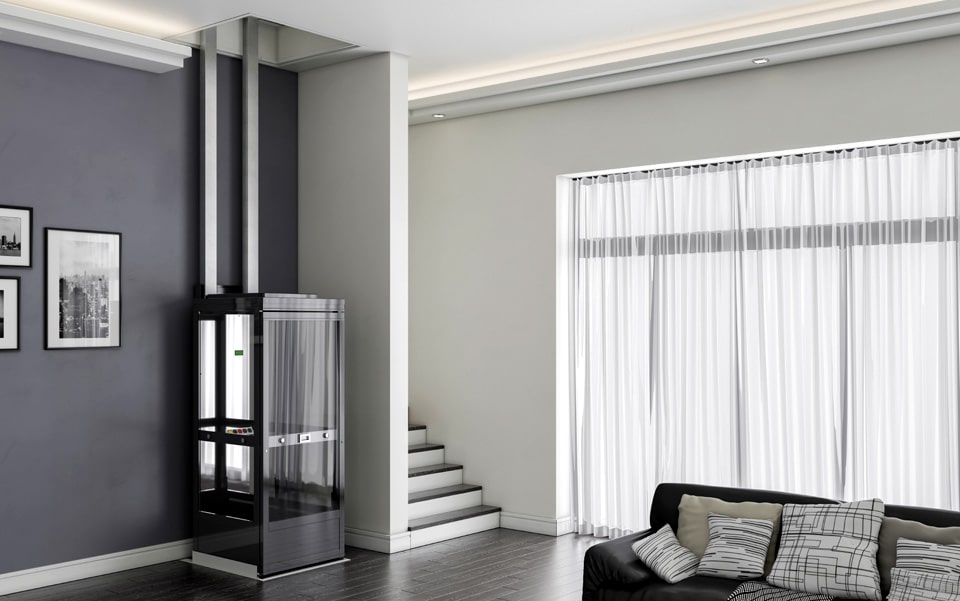Which is the Least Expensive Home Elevator?
With the rising demand for home elevators, choosing the right lift can be overwhelming due to different manufacturers, technologies, and pricing options. While price is a key factor, other direct and indirect elements impact the total cost and long-term investment.
6 Key Factors When Choosing the Least Expensive Home Elevator
- Building Work
SWIFT is an all-inclusive platform lift that requires no separate shaft or special doors on each landing. It can be installed directly on the floor or recessed in a 50 mm pit. Other elevator solutions often need costly additional shafts, larger pits, or external machine rooms. Always check the installation requirements of the lift technology. - Elevator Size
Some manufacturers do not offer compact models suitable for homes. Choosing a small elevator ensures you maximize lift functionality while minimizing the space it occupies. - Weight Capacity
Cheaper models may have limited lifting capacity. Make sure your chosen lift meets your daily needs, including accommodating strollers, groceries, or mobility aids if necessary. - Safety Features
A quality home elevator must be CE marked and include essential safety systems like emergency brakes, battery backup, door sensors, and child locks. Safety features directly impact reliability and long-term costs. - Noise Level
Low-cost elevators may compromise on vibrations or operational noise. For families, a noisy lift can be disruptive. Choose a silent and smooth-running elevator for comfort. - After-Sales Service
Opt for a lift with minimal servicing needs and a long warranty. Poor service or expensive replacement parts can turn a seemingly affordable lift into a costly investment.

Affordable Home Elevator Options
Hydraulic Elevators
Hydraulic lifts are known for being budget-friendly. They operate using a hydraulic cylinder filled with oil, which simplifies installation and reduces the number of mechanical parts. However, they tend to be slower, have lower weight capacity, and require space for an oil tank. They are often designed for public use rather than private homes.
Pneumatic (Vacuum) Elevators
Pneumatic elevators operate using air pressure, requiring no machine room or shaft. They are compact, relatively affordable, and easy to maintain. However, a clear and open installation area is essential.
Rope or Belt-Driven Elevators
Traditional rope or belt-driven elevators use cables and a drum mechanism to move the cabin. They are simple, cost-effective, and suitable for small homes, but typically have slower speeds and lower weight capacities.
Platform Lifts (like SWIFT)
Platform lifts provide a cost-effective, small elevator solution for homes, especially for mobility assistance. They are easy to install, require minimal structural modifications, and are ideal for compact spaces.
Conclusion
Choosing affordable home elevators isn’t just about the upfront price. Consider installation requirements, size, weight capacity, safety, noise, and after-sales service. Compact options like SWIFT platform lifts combine affordability, convenience, and modern design, making them one of the most practical choices for small house elevators.










